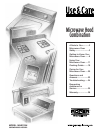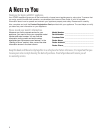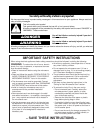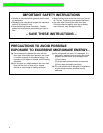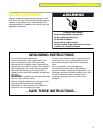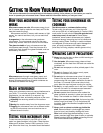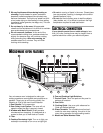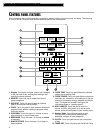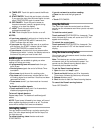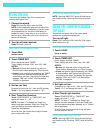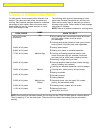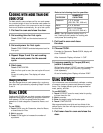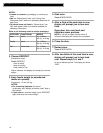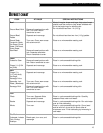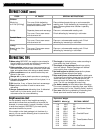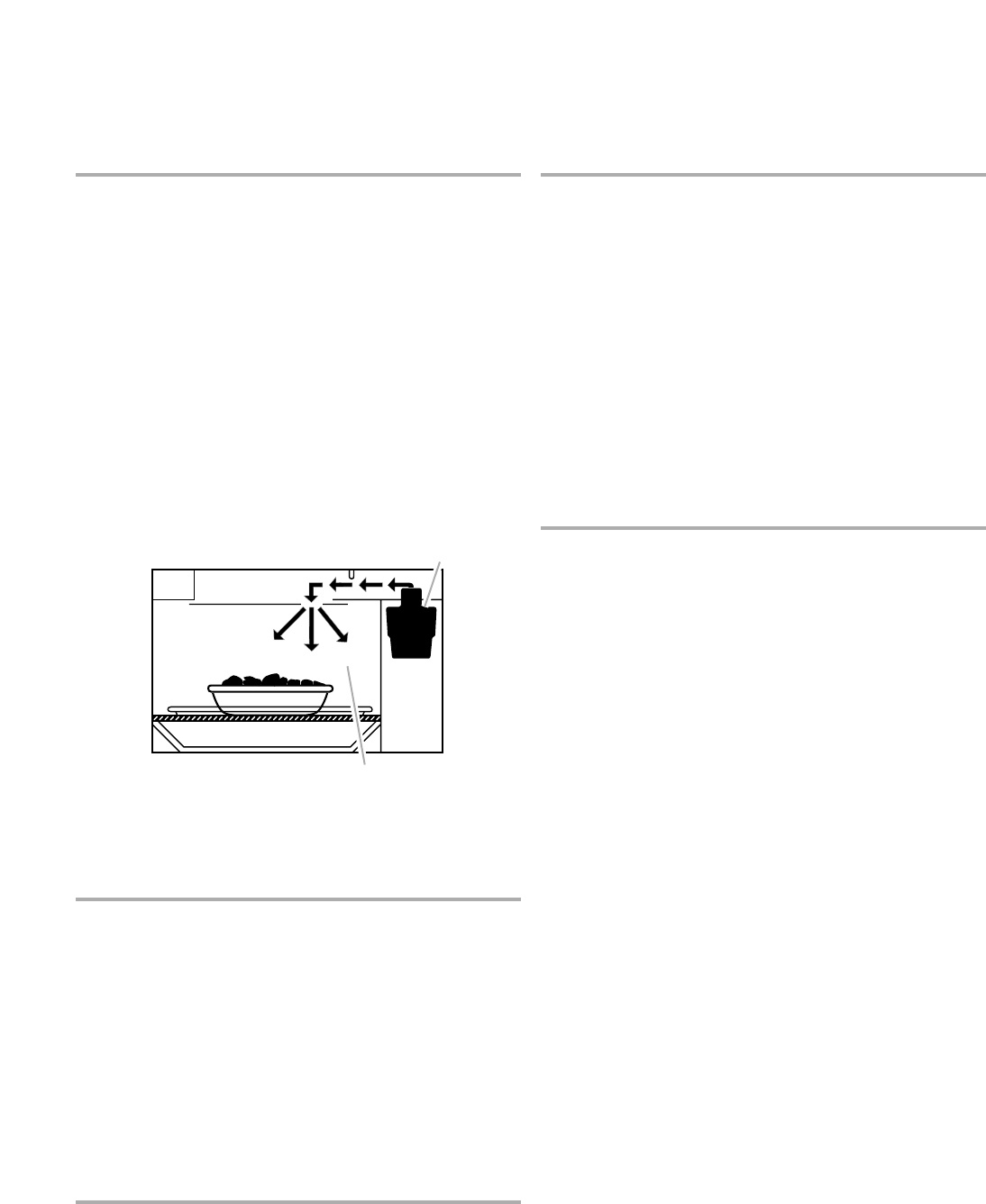
6
Microwaves pass through most glass, paper, and
plastics without heating them so food absorbs the
energy. Microwaves bounce off metal containers so
food does not absorb the energy.
RADIO INTERFERENCE
Using your microwave oven may cause interference to
your radio, TV, or similar equipment. When there is
interference, you can reduce it or remove it by:
•
Cleaning the door and sealing surfaces of the oven.
•
Adjusting the receiving antenna of the radio or
television.
•
Moving the receiver away from the microwave oven.
•
Plugging the microwave oven into a different outlet
so that the microwave oven and receiver are on
different branch circuits.
TESTING YOUR MICROWAVE OVEN
To test the oven put about 1 cup (250 mL) of cold
water in a glass container in the oven. Close the door.
Make sure it latches. Cook at 100% power for 2 min-
utes. When the time is up, the water should be heated.
HOW YOUR MICROWAVE OVEN
WORKS
Microwave ovens are safe. Microwave energy is not
hot. It causes food to make its own heat, and it’s this
heat that cooks the food.
Microwaves are like TV waves, radio waves, or light
waves. You cannot see them, but you can see what
they do.
A magnetron in the microwave oven produces
microwaves. The microwaves move into the oven
where they contact food as it turns on the turntable.
The glass turntable of your microwave oven lets
microwaves pass through. Then they bounce off a
metal floor, back through the glass turntable, and are
absorbed by the food.
GETTING TO KNOW YOUR MICROWAVE OVEN
This section discusses the concepts behind microwave cooking. It also shows you the basics you need to
know to operate your microwave oven. Please read this information before you use your oven.
TESTING YOUR DINNERWARE OR
COOKWARE
Test dinnerware or cookware before using.
To test a dish for safe use, put it into the oven
with a cup (250 mL) of water beside it. Cook at 100%
cook power for one minute. If the dish gets hot and
water stays cool, do not use it. Some dishes
(melamine, some ceramic dinnerware, etc.) absorb
microwave energy, becoming too hot to handle and
slowing cooking times. Cooking in metal containers
not designed for microwave use could damage the
oven, as could containers with hidden metal
(twist-ties, foil lining, staples, metallic glaze or trim).
OPERATING SAFETY PRECAUTIONS
•
Never lean on the door or allow a child to swing on
it when the door is open.
•
Use hot pads. Microwave energy does not heat
containers, but the heat from the food can make the
container hot.
•
Do not use newspaper or other printed paper in the
oven.
•
Do not dry flowers, fruit, herbs, wood, paper,
gourds, or clothes in the oven.
•
Do not start a microwave oven when it is empty.
Product life may be shortened. If you practice
programming the oven, put a container of water in
the oven. It is normal for the oven door to look
wavy after the oven has been running for a while.
•
Do not try to melt paraffin wax in the oven. Paraffin
wax will not melt in a microwave oven because it
allows microwaves to pass through it.
•
Do not operate the microwave oven unless the
glass turntable is securely in place and can rotate
freely. The turntable can rotate in either direction.
•
When you use a browning dish, the browning dish
bottom must be at least
3
⁄16 in (5 mm) above the
turntable. Follow the directions supplied with the
browning dish.
•
Never cook or reheat a whole egg inside the
shell. Steam buildup in whole eggs may cause
them to burst, and possibly damage the oven.
Slice hard-boiled eggs before heating. In rare
cases, poached eggs have been known to explode.
Cover poached eggs and allow a standing time of
one minute before cutting into them.
Oven cavity
Magnetron



